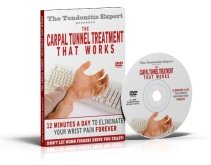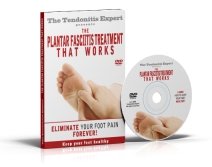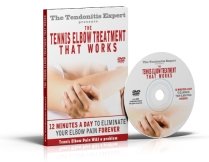|
Sports and Injuries and Tendonitis, Oh My!
We don't usually expect to get them, even if we are very athletic, but it happens to the best of us. I'm going to speak here primarily at an Elite or Professional Sports level, as those athletes push themselves to the extremes of what the body is capable. An important truth to note is that the exact same mechanism and process exists for 'normal' athletes, non-athletes, and elite level and professional athletes.
Professional Sports and Injuries And Tendonitis.I bet the guy who invented baseball never even knew what Tendonitis was. Back then, guys either had pain and injury and were out, or they toughed it out and played through and with it. Back then, the training wasn't as intense as it is now. Baseball has evolved some since it first began in dirt lots and little home town diamonds. Now in all sports programs there is intensive training as well as the rigors of each separate sport. This is a lot of potential wear and tear on the tendons that the body is constantly compensating for and trying to heal. Running has it's effects on hamstrings, groin muscles, and ankle and knee tendons. Throwing has it's effects on shoulder tendons, biceps and triceps tendons, and the tendons attached to forearm muscles and hand muscles. Every sports team has its injured roster. Baseball pitchers seem to have the highest incidence of injury. A lot of effort goes into limiting how much a pitcher can throw, and rotations with other pitchers, and other efforts to keep pitchers healthy. Quarterbacks have issues with their arms too, but it doesn't seem as intensive as throwing a baseball 100 miles an hour. Each sport, and each position on the team, has it's own occupational hazards. Professional Sports and Injuries Prevention have come a long way in the past decades. And there is still much to be desired as far as prevention and recovery results are concerned.
One Effect of Athletes Using SteroidsThe use of steroids in baseball and every other sport has upped the ante for injury and tendonitis. Steroid use creates larger, stronger muscles. It does not directly create stronger tendons. Larger muscles put more pull on the tendons they attach to. As muscles get bigger and bigger and stronger and stronger, they can create more pull force than a tendon can happily handle. This strains the tendon, and can help lead to increased wear and tear injury, as well as increased possibility of a tendon rip which usually happens in the area where the muscle starts turning into tendon. It's hard enough for tendons to withstand the forces regularly placed upon them by top level athletes. When you add in the extra strength from Steroid enhanced muscle, this can set an athlete up for increased risk of injury. Steroid enhanced sports and injures aren't any worse than any other kind of injury, but steroid use plays a role on several levels.
Sports and Injuries -- Tendon Rip and TearWhether it's from impact, or sudden forceful movement with resistance, the structural integrity of a tendon can suddenly fail, which usually leads to a partial tear, but can result in a completely severed tendon. One is obviously worse than the other. Tendon is incredibly tough connective tissue. The rip rarely happens in the body of the tendon itself. Tears usually happen somewhere where tendon blends into muscle. It is the weak point in the structure. Tears can happen in 'healthy' tissue if the load is too great. Realistically, they only happen after the tendon has been stressed over and over for a long period of time. They get strained, too much load is constantly placed on them from tight muscles, small tears turn into weaker scar tissue, and eventually the strength of the structure fails under pressure. Once the first strain and micro-tear is present, some level of Inflammation is constantly present. And the Pain Causing Dynamic gets a running start. Even before a sports injury happens to a tendon, even if the athlete is feeling no pain, there is almost certainly an ecology of Tendonitis in place. The presence of the Tendonitis dynamic weakens the tendon just enough, helps add all the right factors necessary for a structural failure, and is often a precursor to a rip and tear injury. Even if the athlete had no complaints before whatever incident 'hurt' the tendon. Any conversation about sports and injuries needs to take into account all the underlying principles of tendon injury and tendonitis, not just proper form and preventing overuse.
Sports and Injuries -- Tendonitis InjurySports team medical staff call Tendonitis an 'injury' because the player hurts, and can even be disabled by the pain even if there is no rip or tear. Acute Tendonitis creates such a severe inflammation response that the can can keep a player from moving. Depending on where the tendonitis is at, a player can get away with it for a while. But if they can't lift their arm, that's a problem. Over and over athlete performs a necessary action, usually hard and fast. This effortful motion puts increased load and increased strain on the tendon. Whether the tendon is sliding through a groove creating friction and irritation, or just the sudden tug on the tendon from a muscle firing, or both, tiny microtears happen. Usually the body can just heal these, but after a certain point, it's too much for the body to easily deal with. Then inflammation, the Pain Causing Dynamic and the physical dynamic of Tendonitis start, and then grows and grows, until it is to the level where it is felt and seen as an injury.
Sports and Injuries -- A Healing Tendon Tear Becomes TendonitisSo let's say a player had a partially torn tendon. They take time off, let it heal and rehab, maybe even get surgery. The tendon heals with scar tissue, which is structurally weaker than it was before. It is easy for a scar tissue fiber to rip. And, the Process of Inflammation is still going. The Pain Causing Dynamic (PCD) is still at play. When one of those scar tissue fibers rips off, the body recognizes it as an injury and what does it do? It turns up the inflammation, which makes the PCD speed up. So when you read in the sports and injury news that your favorite player has 'healed' from his injury and is back on the active roster, know that Injury and Tendonitis is not an 'on' or 'off' situation. It's ongoing. The more a team and a player know how to effectively deal with that, the better. Why teams and trainers continue to rely on Rest and Corticosteroid Shots for sports and injuries and tendonitis problems I'll never know.
|
|
||
|
|
|||





